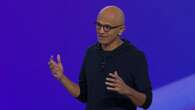Branded is a weekly column devoted to the intersection of marketing, business, design, and culture.
When Elliott Hill begins his stint as the new chief executive of Nike next week, he might consider stealing a move from longtime rival Adidas—and talk some trash about his own company.
Adidas was saddled with multiple problems (including the messy dissolution of its partnership with Yeezy and resulting inventory overload) when Puma veteran Bjørn Gulden took the reins in early 2023. Many had an unabashedly critical take on the company, most notably Bjørn Gulden himself. “The numbers speak for themselves,” he said in a company press release, not long after taking over the top job. “We are currently not performing the way we should.” Gulden granted that Adidas had “the ingredients to be successful” but suggested they were in disarray. “We need to put the pieces back together again,” he said, “but we need some time.”
He referred to the year ahead as a “reset” period—“a year of transition to set the base to again be a growing and profitable company.”
It’s that last bit that gives away the real point of dunking on your own brand when in comeback mode: You want to be judged against the worst possible baseline, not the far more impressive performance from back before the problems set in. Partly, this practice—call it self-negging—is a classic under-promise and over-deliver strategy: Get expectations low enough and you look like a rock star for getting the basics right.
And in a stretch that’s seen plenty of CEO churn, thanks to disappointing performances, new chief executives haven’t been shy about inheriting negatives. Starbucks has “drifted from [its] core,” its new CEO Brian Niccol wrote in an open letter last month. The experience “can feel transactional, menus can feel overwhelming, product is inconsistent, the wait too long or the handoff too hectic.” He announced a “first hundred days” plan to visit U.S. locations and take steps toward a back-to-the-core effort.
Red Lobster, recently emerging from bankruptcy, has closed more than a hundred locations and cycled through multiple CEOs. “There’s a hole to climb out of, for sure,” its new chief executive Damola Adamolekun told CNN earlier this month. The 35-year-old former P.F. Chang CEO has so far announced only “incremental changes” but, not surprisingly, has stressed that the chain’s now infamous endless-shrimp special (since discontinued) made little financial sense and caused “a lot of chaos.”
The strategy doesn’t always work, and can easily come across as simply scapegoating past management or fallout from C-suite knife-fighting (see Bob Iger’s return to the top job at a beleaguered Disney in 2022, for example). But if share price is any indicator, Adidas executed well on buying time to prove it could execute better in running its actual business.
In May, just a few months into Gulden’s tenure, Adidas’s progress was mixed (it still held much more inventory than analysts expected), but setting a low bar was already helping the company’s stock price, which has now risen about 28% since the beginning of the year. For his part, Gulden didn’t exactly raise the bar much at his first earnings call with investors in April, instead saying that arch-rival Nike had done a better job with its product mix.
Whatever Gulden’s motivation was, that sounds generous in retrospect: Nike is the one facing big challenges under a new leader. A pandemic-era move toward more direct sales at the expense of retail partnerships has proved rocky. And rival up-and-comers including Hoka and On have built devoted athlete audiences and resonant brands—aka, traditional Nike strengths. It’s no secret that the company has suffered through “a moribund patch,” as Fast Company reported back in May, marked by flattening sales and layoffs. After news broke in September that Hill would replace CEO John Donahue, the price of Nike shares immediately jumped about 8%, before eventually sliding back down.
Nike has postponed its planned November investor day event, so it’s not clear when we’ll hear from Hill in a substantial way. But, while he appears to be a popular choice, he may be wise to make his opening notes downbeat: underscoring the depth of the challenges rather than promising quick solutions. It may also be wise to do so sooner than the company’s next earnings report in the new year: Setting expectations isn’t just about predicting where you’ll finish, but defining the starting line.
As it turned out, Adidas really did have a pretty lousy 2023, posting its first annual loss in more than three decades. While it seems to have worked through the Yeezy issue, the company still expects North American revenue to decline in 2024. Still, Guldin could say with a straight face that the year “ended better than what I had expected.” Well, of course, it did: After all, he indicated that he expected the worst.
But Guldin wasn’t exactly bragging, calling the results “by far not good enough.” Even so, the Adidas share price is up 90% since he started. Chalk that up to the power of (self-directed) trash talk.









No comments